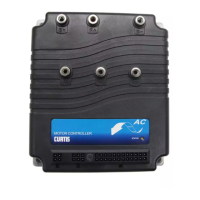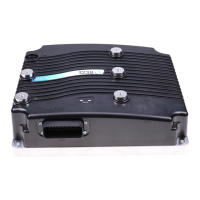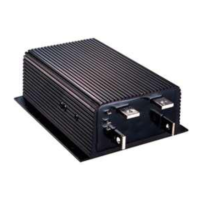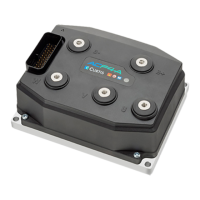Curtis 1243GEN2 Manual
24
Fig. 13 Ramp restraint
maps for controller with
Field Min set at 3 amps,
Field Max at 18 amps, and
braking current limit at
300 amps.
BRAKING CURRENT (amperes)
FIELD CURRENT (amperes)
300250200150100500
25
20
15
10
5
0
Field Max
= 18 A
Field Min
= 3 A
Brake C/L
= 300 A
Restraint = 25 A
Restraint = 15 A
Restraint = 10 A
Restraint = 3 A
Restraint = 35 A
At zero throttle, the restraint function tries to keep the motor at zero
speed, which helps hold the vehicle from running away down ramps. The
higher the restraint parameter value, the stronger the braking force applied to
the motor and the slower the vehicle will creep down ramps. This creeping
speed depends on the restraint setting, the steepness of the ramp, and the
vehicle load weight. The restraint feature can never hold a vehicle perfectly
stationary on a ramp and is not intended to replace a mechanical or electromag-
netic brake for this purpose.
The restraint parameter establishes a linear mapping of field current to
braking current, and is adjustable from the programmed minimum field (Field
Min) up to the controller’s full rated field current. As shown in Figure 13, it is
limited by the programmed maximum field (Field Max). Setting the restraint
parameter to a high value will cause strong braking, in an effort to bring the
vehicle speed down to the requested speed. Extremely high values may cause the
vehicle speed to oscillate (“hunt”) while in ramp restraint.
The restraint parameter is tuned as part of the vehicle performance
adjustment process (Section 5).
M1–M4, BRAKE RATE
The braking rate defines the time it takes the controller to increase from 0%
braking output to 100% braking output (as defined by the corresponding mode-
specific brake current limit) when a new direction is selected. A larger value
represents a longer time and consequently gentler braking. Faster braking is
achieved by adjusting the braking rate to a smaller value. The braking rate is
adjustable from 0.1 second to 3.0 seconds.
Note: The variable braking parameter must be programmed Off for the
braking rate parameter to apply; if variable braking is On, the braking rate will
be determined by throttle position rather than the programmed braking rate.
3 — PROGRAMMABLE PARAMETERS:
Braking Parameters
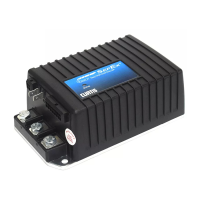
